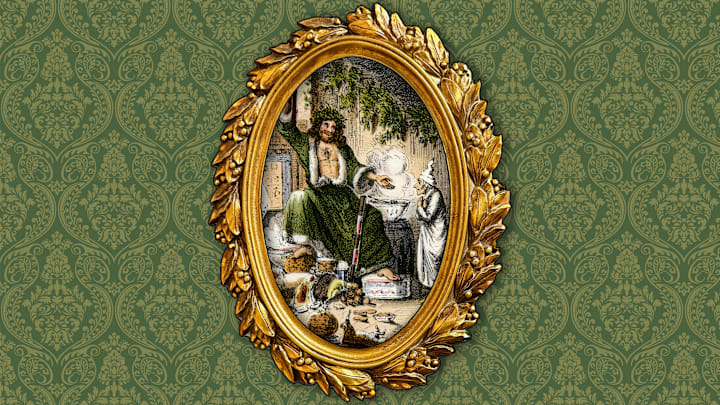’Tis the season to indulge in your favorite Christmas traditions, whether that’s hanging stockings or leaving milk and cookies out for Santa. Most modern traditions all fairly wholesome, too. But in Victorian England, Christmas was an opportunity to exchange gruesome stories of ghosts, evil spirits, and people gone mad.
A Spooky Season
According to Sara Cleto, an expert in folklore who spoke with History.com, Victorian-era ghost stories were ideal for an England that was swathed in darkness. At night, with candles or a fire the only light source, the atmosphere was perfect for a spooky story to kill time on a long winter’s night. As one British humorist wrote:
“Whenever five or six English-speaking people meet round a fire on Christmas Eve, they start telling each other ghost stories. Nothing satisfies us on Christmas Eve but to hear each other tell authentic anecdotes about specters. It is a genial, festive season, and we love to muse upon graves, and dead bodies, and murders, and blood.”
Part of the incentive to tell ghost stories was a belief that spirits had license for mischief on Christmas Eve—a kind of free play for ghosts before they were said to restrain themselves on the holy day to follow.

When stripped of its seasonal trimmings, the cold winter night can also be ideal for a scary story—people are nominally trapped in place if the weather is poor, no electricity is brightening rooms, and no telephones could bring comfort. That was true of both storytellers and the fictional people populating the story, making for an immersive experience.
You May Also Like ...
- 11 Odd Victorian Christmas Traditions
- 10 UK Christmas Traditions That Confuse Americans
- 10 Old Christmas Traditions We Don't See Anymore
Add Mental Floss as a preferred news source!
In “The Open Door,” for example, a woman inside her home is provoked by a strange voice begging to be let in. In “The Wondersmith,” haunted wooden toys spring to life and spray children with poison. In “The Mistletoe Bough,” one of the most repeated tales of terror, a bride plays a game on her wedding night by hiding in a trunk. Something goes wrong, and the trunk is opened years later to reveal her skeleton.
Not even Santa Claus was spared in this morbid spin on the holiday. In one iteration, Santa teamed up with the devil to figure out which children deserved gifts and which ones needed punishment.
A Change in Taste
When the Industrial Revolution rolled around, many of the scary stories that had been passed on orally found their way into print and scooped up by revelers who considered the tales to be a Christmas staple.

The man who helped popularize the holiday ghost genre and also helped to transition from it was Charles Dickens, who wrote A Christmas Carol in 1843 and printed a number of supernatural holiday stories in publications he was editing.
But Dickens was working with more than just spectral entities. His themes of family and forgiveness were baked in, and eventually, those became the dominant lessons inherent in holiday stories. That was particularly true in America, which had never really shared European tastes when it came to scary Christmas tales. Plus, Halloween had that territory well-covered.
So if you want to have a Victorian England-style holiday, turn off the lights and tell a ghost story.
A version of this story originally ran in 2021; it has been updated for 2025.
